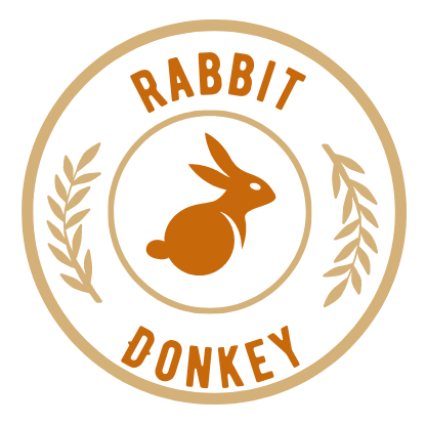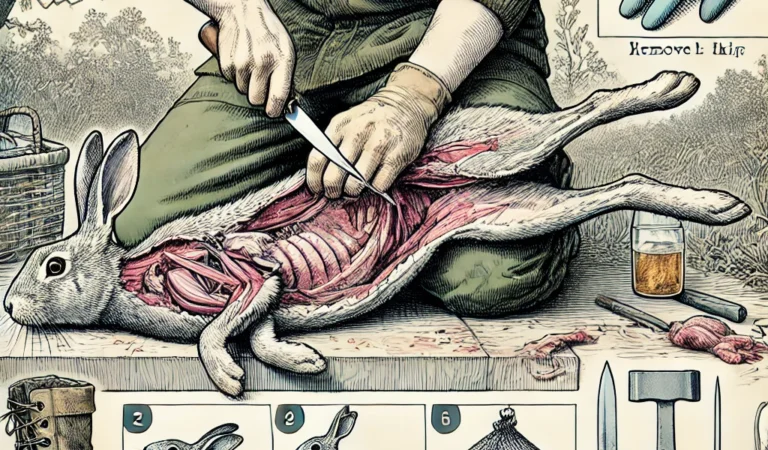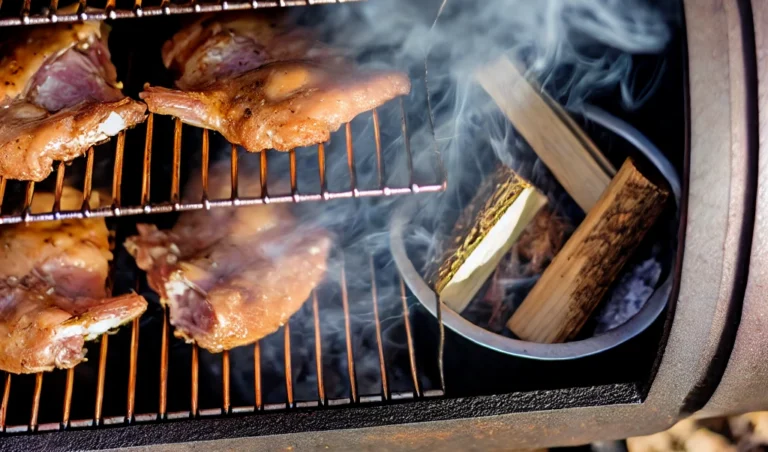Rabbit Hunting Dogs: A Comprehensive Guide for 2024
Rabbit hunting dogs, also known as rabbit hounds, are a group of highly skilled canines that have been selectively bred to assist hunters in tracking, flushing out, and retrieving rabbits during hunts. These dogs possess a set of instincts and talents that make them indispensable companions for avid hunters in pursuit of these elusive cottontails.
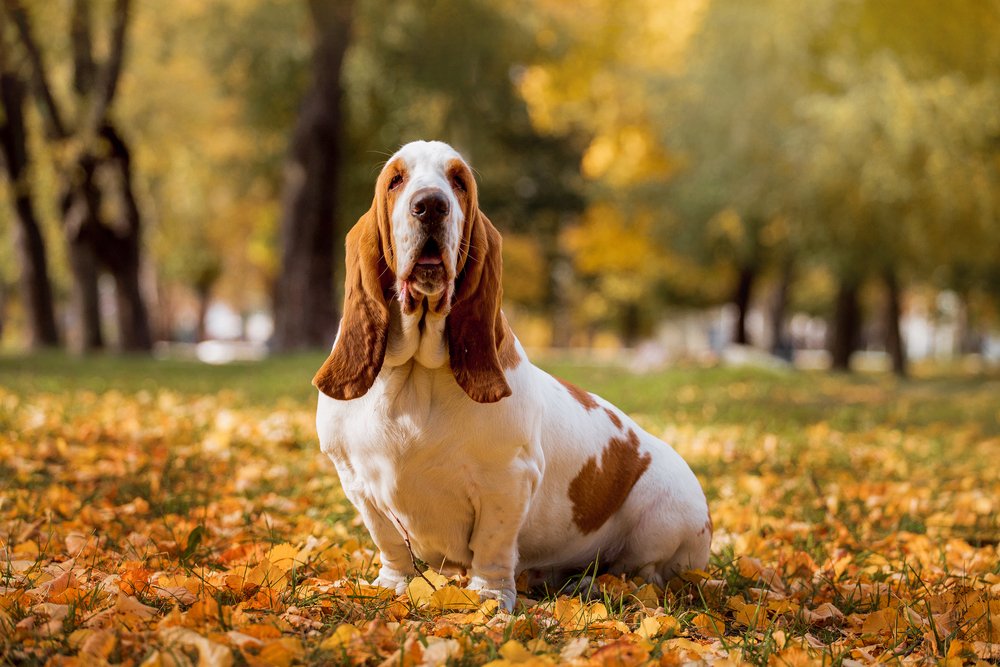
The primary purpose of rabbit hunting dogs is to aid hunters in locating rabbits by scenting their trails and either driving them toward waiting for hunters or retrieving downed game. These dogs serve as invaluable partners, using their exceptional sense of smell, keen sight, and impressive agility to assist hunters in challenging terrains such as thickets, forests, or open fields.
These remarkable canines enhance the hunting experience for enthusiasts and contribute to wildlife management efforts by helping control rabbit populations in certain regions.
Evolution of Rabbit Hunting Dogs
The history of rabbit hunting dogs can be traced back centuries when humans first recognized the value of utilizing canines in hunting expeditions. This partnership between man and dog has evolved through selective breeding to enhance specific skills required for successful rabbit hunts. The early stages saw the emergence of breeds like Beagles and Basset Hounds that were specifically developed for their tracking abilities.
These breeds were selected based on their innate talent for scent detection and the endurance necessary to keep up with a fast-paced chase. As time passed, breeders fine-tuned these characteristics through careful selection to create more specialized breeds, like Dachshunds, which excel at flushing rabbits out of caves.
Modern-day rabbit-hunting dog breeds have become highly specialized and well-suited to the task through generations of breeding programs focused on refining traits such as scenting ability, endurance, intelligence, and agility. They have evolved from their ancestral counterparts, deepening the bond between humans and dogs while also contributing to preserving hunting traditions.
Popular Breeds of Rabbit Hunting Dogs
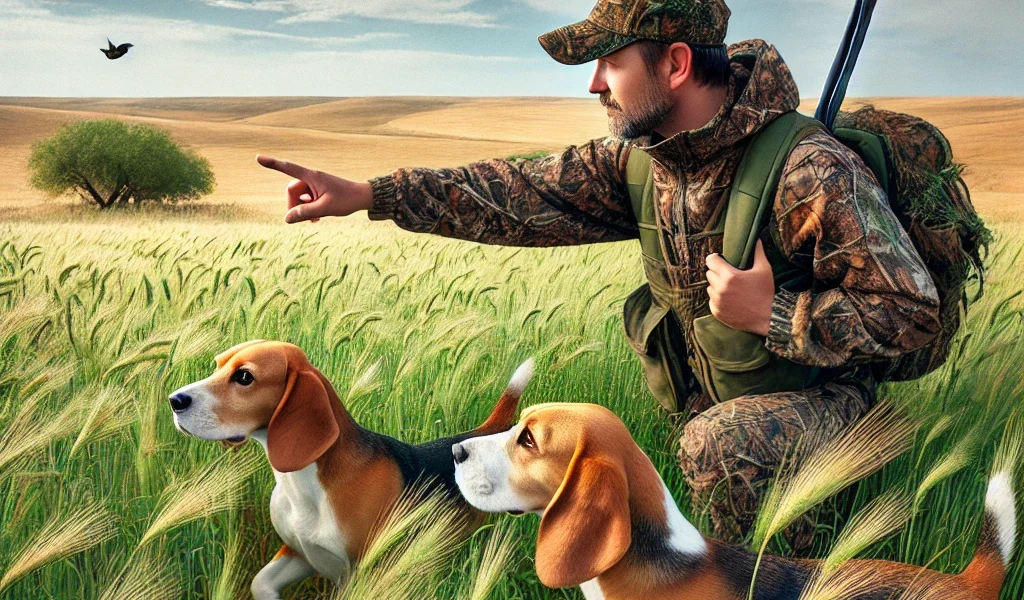
Beagles: The quintessential rabbit hunting dog breed
Regarding rabbit-hunting dogs, one breed stands out as the quintessential choice – the Beagle. These medium-sized canines possess a plethora of qualities that make them exceptional hunters. Recognized for their distinct physical traits, Beagles have a muscular build, short legs, and a robust yet compact body.
Their smooth and dense coats come in various colors, including tricolor (black, white, and tan) or bicolor (lemon and white). Don’t be fooled by their adorable appearance; these dogs are built for the hunt.
What truly sets Beagles apart in rabbit hunting is their unparalleled scenting abilities and tracking skills. Equipped with an extraordinary sense of smell, Beagles can detect even the faintest traces left behind by rabbits.
Their keen noses enable them to effortlessly follow scent trails, allowing hunters to track rabbits through wooded areas or open fields. Due to their innate talent for sniffing out prey, beagles are often called “scent hounds.”
Basset Hounds
Another remarkable breed that excels in rabbit hunting is the Basset Hound. Basset Hounds stand out among other canine companions with their unique appearance characterized by short legs, long ears, and droopy skin folds around their face and neck. While they may seem like laid-back couch potatoes at first glance, don’t let their relaxed demeanor fool you – these low-slung hunters possess an unmatched nose for scent detection.
Basset Hounds boast exceptional scent detection capabilities that are ideal for tracking rabbits during hunts. Their long ears serve a functional purpose by sweeping scents from the ground toward their powerful olfactory receptors, enhancing their ability to pick up even the faintest trails.
This keen sense of smell, combined with their unwavering determination, allows Basset Hounds to navigate through underbrush and dense vegetation in pursuit of their prey. Their extraordinary scenting skills make them a valuable asset in rabbit hunting expeditions.

Dachshunds
Known for their unique body structure and elongated form, Dachshunds have gained popularity not only as delightful companions but also as impressive rabbit-hunting dogs. Their compact size and distinctive physical features contribute to their exceptional maneuverability in various terrains. With their elongated bodies and short legs, Dachshunds are well-equipped for flushing out rabbits from burrows or chasing them through thick vegetation.
These skilled hunters possess a fearless nature that allows them to venture into tight spaces where rabbits might seek refuge. Their agility and tenacity make them particularly adept at pursuing above-ground rabbits as well.
However, Dachshunds’ versatility as rabbit hunters extends beyond surface-level pursuits. With their history of being bred for badger hunting, they also can track rabbits below ground.
Their small size enables them to enter caves searching for prey while maintaining the energy needed for successful underground chases. Beagles, Basset Hounds, and Dachshunds each bring unique qualities to rabbit-hunting dogs.
Beagles impress with their scenting abilities and tracking skills; Basset Hounds amaze with their exceptional scent detection capabilities, while Dachshunds showcase versatility in pursuing both above-ground and below-ground rabbits. These popular breeds have played vital roles in countless successful hunts throughout history thanks to their physical attributes tailored specifically for rabbit hunting.
Training Rabbit Hunting Dogs for Success

Basic Obedience Training for Control in the Field
Establishing basic obedience commands is crucial for maintaining control when training rabbit-hunting dogs during the chase. Recall commands are vital in keeping your dog close and ensuring it doesn’t wander off too far while hot on a rabbit’s trail. Teaching your dog reliable recall can be achieved through repetitive training exercises.
Start with shorter distances in a controlled environment, gradually increasing the distance as your dog becomes more reliable. Remember to reward them with treats and praise each time they successfully come back when called.
In addition to recall commands, incorporating sit, stay, and heel commands into your dog’s training repertoire is essential for better handling in the field. This foundation of obedience helps establish boundaries and allows you to direct the movements of your hunting companion effectively.
A well-trained rabbit hunting dog should respond promptly to sit and stay commands when you need them to hold steady or wait before flushing out a rabbit. Similarly, teaching them proper heeling ensures they stay close by your side during walks or hunts while maintaining focus on their tasks.
Scent Training Techniques to Enhance Tracking Abilities
One of the distinguishing traits of rabbit-hunting dogs is their exceptional sense of smell. To harness and enhance their tracking abilities, scent training becomes integral to their development as skilled hunters. One effective technique involves introducing artificial scents that mimic the scent trail left by rabbits.
Begin by placing a small amount of artificial scent on an object, such as a rag or cloth. Gradually increase intensity by adding more scent as your dog becomes familiar with the smell.
Use this scented object to create simple trails in outdoor environments where rabbits are likely to frequent. Training exercises should focus on developing your dog’s ability to track and maintain concentration on rabbit scents amidst distractions such as other animal smells or environmental factors.
Gradually increase the complexity of scent trails by introducing turns, loops, and changes in direction. This will challenge your dog’s ability to follow the scent accurately and reinforce their tracking skills.
Remember, consistency and positive reinforcement with treats or verbal praise are key elements in training rabbit-hunting dogs. By incorporating basic obedience commands and scent training techniques into their training regimen, you’ll be well on your way to developing a skilled and reliable hunting companion.
Rabbit Hunting Strategies with Dogs
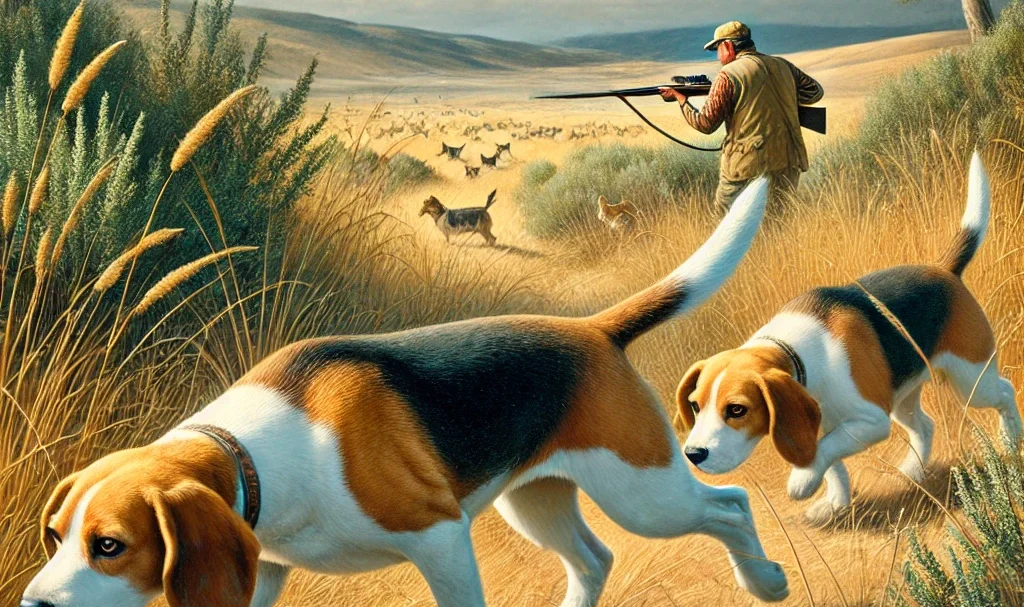
Stalking techniques for a successful hunt
Regarding rabbit hunting, employing effective stalking techniques can significantly increase your chances of a successful hunt. Rabbits have keen senses and are easily spooked, so it’s important to approach them stealthily.
One key strategy is to move slowly and quietly, making deliberate movements while maintaining a low profile. This prevents alerting the rabbits to your presence and gives you a better chance of getting close enough for a shot.
Creating a stealthy approach to avoid alerting rabbits
To avoid alerting rabbits during your approach, it’s crucial to minimize noise and visual cues that may startle them. Wear appropriate clothing that blends with the natural surroundings, such as earth tones or camouflage patterns.
Move carefully, avoiding stepping on dry leaves or twigs that could snap underfoot. It’s also advisable to secure or safely stow away any unnecessary equipment to reduce clanging or rattling sounds that may alarm the prey.
Another essential aspect of creating a stealthy approach is utilizing cover and natural terrain features. Take advantage of bushes, trees, or natural topography that can provide concealment as you make your way closer to potential rabbit hiding spots.
Walk along edges where different vegetation types meet – rabbits often seek cover between fields, woods, or thickets in these transitional areas. Using cover effectively and minimizing disturbances along the way makes you more likely to catch those elusive bunnies by surprise.
Teamwork between hunter and dog during the chase
One of the joys of hunting with dogs is witnessing their incredible teamwork and cooperation in the pursuit of rabbits. Clear communication signals between the handler and dog maximize efficiency during the chase. A well-trained hunting dog will exhibit specific behaviors when it picks up a rabbit’s scent or detects its presence.
They may start tracking with their nose to the ground, wagging their tail excitedly, or even barking softly in anticipation. As the handler, it’s crucial to be attentive and responsive to these signals, as they indicate potential opportunities for a successful hunt.
Communication signals between handler and dog
Establishing clear communication signals and commands with your hunting dog is essential for effective cooperation in the field. Common commands include “hunt,” which indicates that the dog should begin searching for rabbits, and “whoa” or “steady,” which instructs them to pause or slow down. The recall command is crucial to maintain proximity with your dog during the chase.
Hand signals can also be beneficial when verbal communication isn’t ideal due to distance or noise levels. A raised hand could signal your dog to stop while pointing in a certain direction, which guides them toward an area where you suspect rabbits might be hiding.
Coordinating movements to corner or flush out rabbits
During the chase, strategically coordinating your movements with your hunting dog is important. You can effectively corner or flush out rabbits from their hiding spots by staying aware of each other’s positioning and actions. When cornering rabbits, positioning yourself strategically at potential escape routes can help cut off their options.
By blocking pathways with the help of your hunting dog, you increase the chances of successfully capturing the prey as they try to flee. Alternatively, flushing out rabbits involves driving them from cover towards waiting hunters.
This technique requires coordination between you and your dog as you advance through suitable cover areas together. As your hunting companion works diligently to locate and startle hidden rabbits into making a run for it, you must be ready for quick shots while maintaining safety precautions.
With proper stalking techniques and efficient teamwork between hunter and dog during hunts, you’ll greatly enhance your success in the pursuit of rabbits. Mastering these strategies takes time and practice, but the rewards are not only measured in bags filled with games but also in the deep satisfaction that comes from experiencing the beauty of nature alongside your loyal four-legged partner.
Ethical Considerations in Rabbit Hunting with Dogs
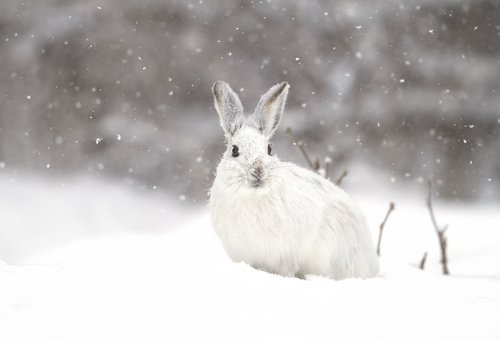
Conservation practices
When hunting rabbits with dogs, ethical considerations must be upheld that prioritize the well-being of both the rabbits and their environment. Conservation practices play a vital role in ensuring sustainable hunting and maintaining healthy rabbit populations. Hunters should adhere to local regulations and obtain licenses to ensure legal compliance.
Conservation efforts include carefully managing rabbit populations, preventing overhunting, and preserving their natural habitats. This involves monitoring rabbit numbers through surveys and population studies conducted by wildlife agencies.
By understanding the dynamics of rabbit populations, hunters can make informed decisions about hunting quotas, ensuring that their activities do not jeopardize the species’ overall health. Additionally, responsible hunters contribute to conservation efforts by participating in habitat restoration initiatives.
This involves reestablishing native vegetation, maintaining brush piles for shelter, and creating food plots that provide sustenance for rabbits. Maintaining a balance between hunting opportunities and conservation efforts ensures that future generations can continue to enjoy rabbit hunting.
Conclusion
Rabbit hunting with dogs is not just a recreational activity; it also holds the potential for meaningful contributions toward ecological balance. When approached ethically and responsibly, this sport can promote conservation practices while allowing individuals to connect with nature on a deeper level.
By respecting local regulations, monitoring populations, and participating in habitat restoration initiatives, hunters demonstrate their commitment to preserving healthy ecosystems. Through these efforts, they help maintain biodiversity while enjoying an age-old tradition.
So, next time you venture into rabbit hunting with dogs, remember the importance of ethical considerations and embrace your role as a steward of our natural environment. Together, we can ensure that future generations will have the opportunity to appreciate both the thrill of the chase and the beauty of our wildlife-rich landscapes.
